Seeds, the beginning of new plant life, need to disperse to thrive. Just like planning your next exciting Vietnamese adventure with SIXT.VN, seeds rely on various travel methods to discover the perfect environment for growth. From wind and water to animals and even explosive mechanisms, understanding seed dispersal unlocks a fascinating aspect of nature and mirrors the meticulous planning we put into crafting your perfect travel experience. Let’s delve into these amazing strategies and uncover how they ensure the continuation of plant species across the globe, much like SIXT.VN ensures a seamless travel experience for you.
1. What Are The Primary Methods Of Seed Dispersal?
The main ways seeds travel are through wind, water, gravity, animals, and ballistic dispersal. These methods ensure seeds reach new environments suitable for germination and growth, vital for the survival and spread of plant species.
1.1 Wind Dispersal: Airborne Adventures
Wind dispersal, or anemochory, involves seeds equipped with lightweight structures to float through the air. Maple trees and dandelions are prime examples of plants relying on wind to carry their seeds far and wide. These seeds often possess fluffy parts or wing-like appendages that enhance their buoyancy, allowing them to travel considerable distances on the breeze. According to research from the Botanical Society of America, in 2018, wind dispersal is most effective in open areas with consistent airflow, enabling seeds to colonize new habitats. Because wind dispersal is somewhat random, plants that use this method produce vast quantities of seeds to increase the chances of successful germination in suitable locations. Consider the dandelion, each seed delicately attached to a parachute-like structure, waiting for the wind to carry it to fertile ground.
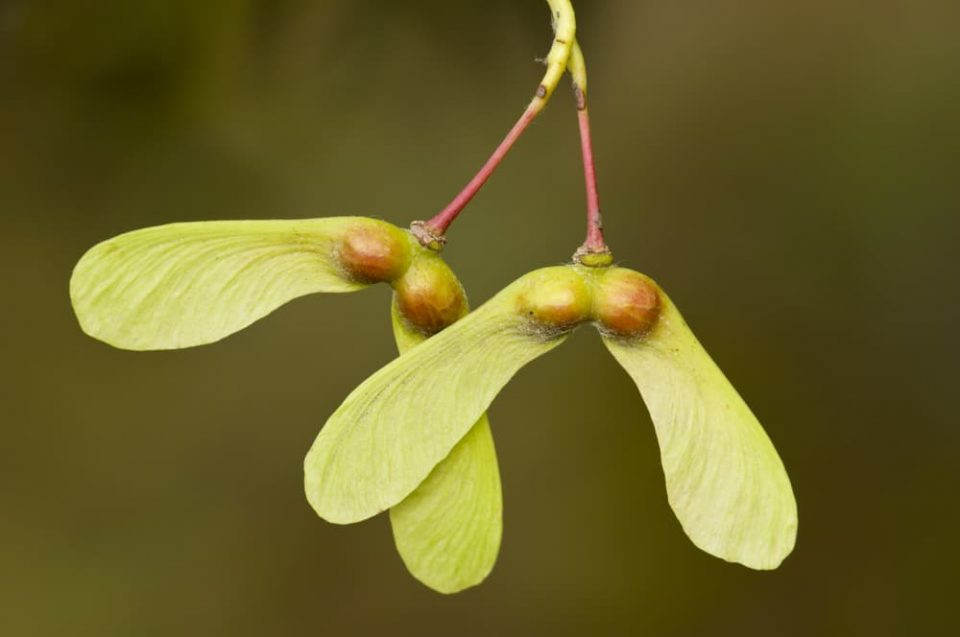 Maple seeds ready to travel by wind
Maple seeds ready to travel by wind
Alt Text: Maple seeds with wings, adapted for wind dispersal.
1.2 Water Dispersal: Ocean Voyages
Water dispersal, or hydrochory, allows seeds to travel vast distances, even across oceans. Coconut trees exemplify this method, producing robust seeds capable of floating for thousands of miles. These seeds are encased in waterproof or water-resistant coverings and possess structures that help them stay afloat. Imagine a coconut embarking on an epic journey across the ocean, eventually landing on a distant shore, ready to sprout into a new tree. According to research from the University of Miami’s Rosenstiel School of Marine and Atmospheric Science, in 2020, hydrochory is essential for plant distribution in coastal regions and islands, facilitating the spread of species to new territories. Survival on water journeys demands that seeds have a protective outer layer and some means to stay buoyant, such as air-filled cavities or fibrous husks.
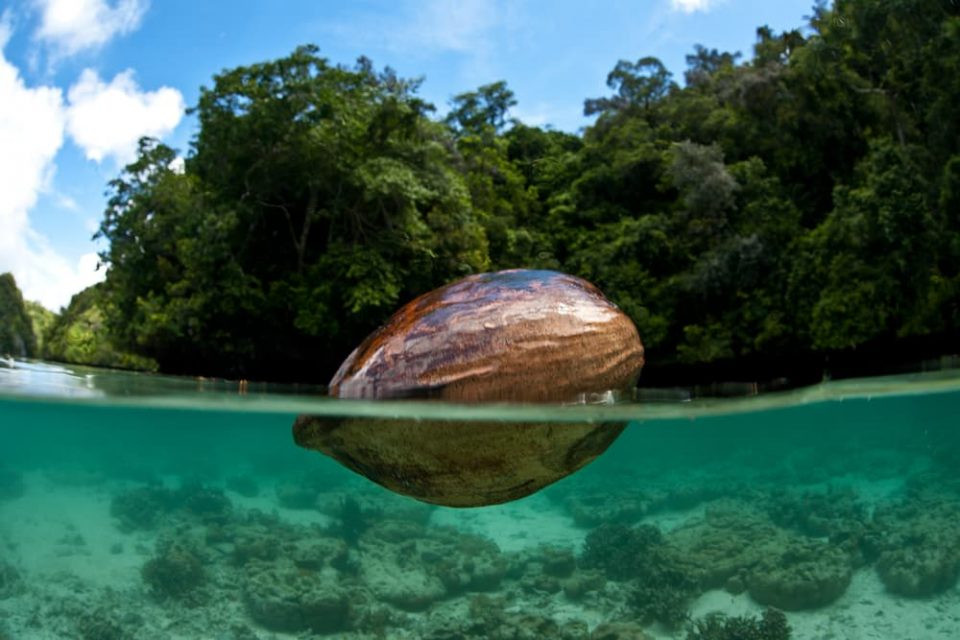 Coconut floating in water
Coconut floating in water
Alt Text: Coconut floating on water, showcasing water dispersal.
1.3 Gravity Dispersal: A Downward Journey
Gravity dispersal, also known as autochory, involves seeds falling directly to the ground near the parent plant. Plants like poppies, which thrive in colonies, often employ this method. These seeds are typically round or tough, helping them withstand the impact of falling or roll a short distance away from the parent plant. This strategy is effective for plants that benefit from growing in close proximity to one another. According to research from the Ecological Society of America, in 2019, gravity dispersal is common in dense forests where wind and water dispersal are less effective, allowing plants to maintain stable populations in localized areas. The seeds’ shape and durability are crucial for survival, ensuring they can establish themselves in the immediate vicinity of the parent plant.
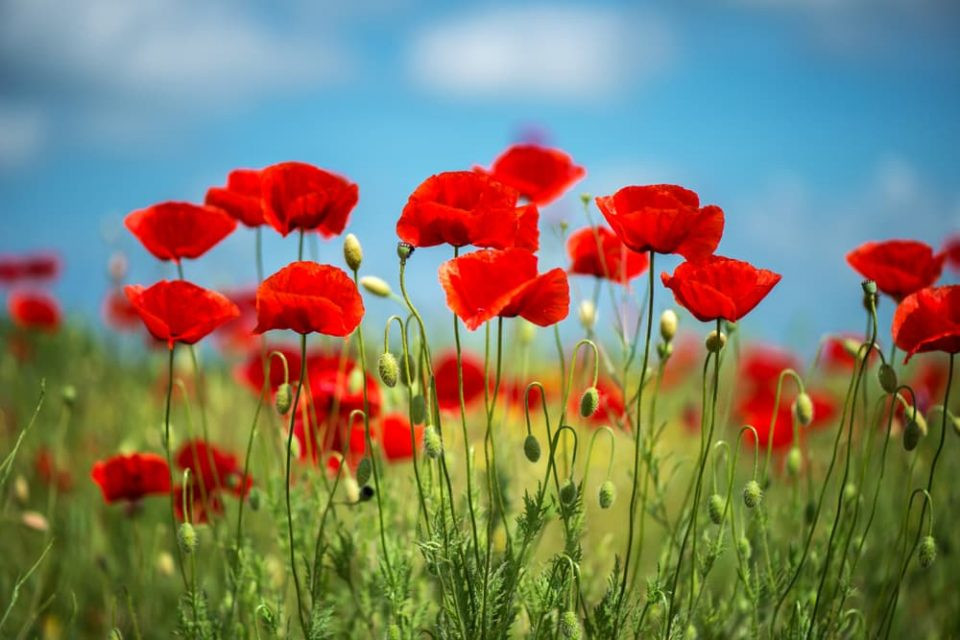 Poppies in a field
Poppies in a field
Alt Text: Poppies in a field, illustrating gravity dispersal.
1.4 Ballistic Dispersal: Explosive Launches
Ballistic dispersal involves plants ejecting their seeds forcefully into the air. The tropical sandbox tree is a remarkable example, with seed pods that explode when dry, launching seeds with considerable force and a loud noise. Similarly, the touch-me-not balsam found in the United Kingdom features seed pods that burst upon contact, scattering seeds around the surrounding area. According to research from the Royal Botanic Gardens, Kew, in 2021, ballistic dispersal is an effective strategy for plants in competitive environments, allowing them to distribute seeds beyond the immediate vicinity of the parent plant. This explosive mechanism ensures that seeds are dispersed more widely than gravity alone would allow.
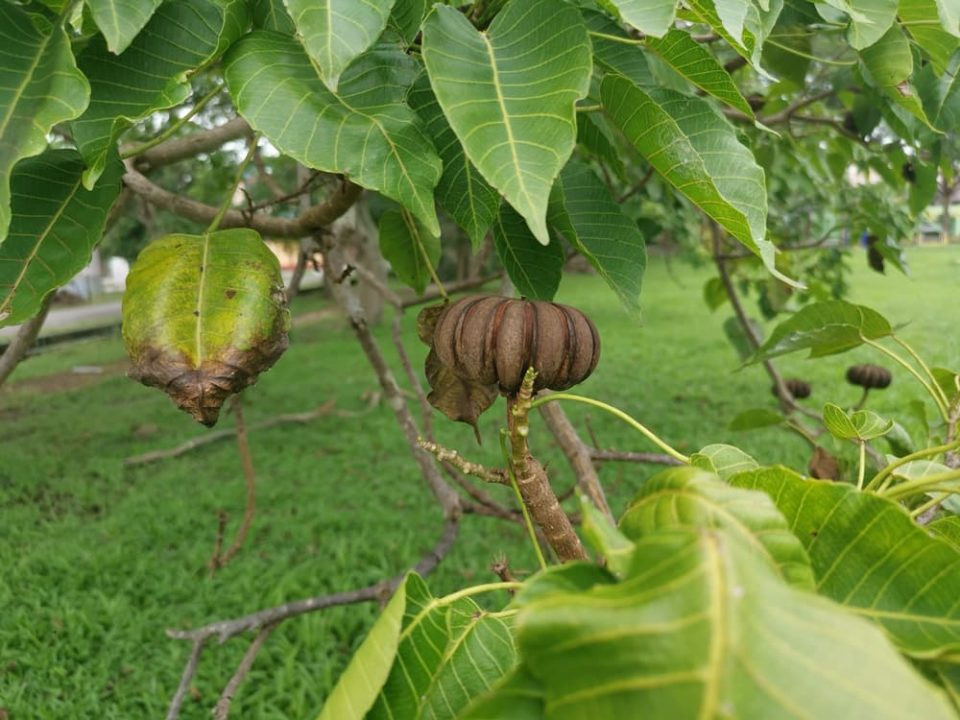 Seed pod of a sandbox tree
Seed pod of a sandbox tree
Alt Text: Seed pod of a sandbox tree, showcasing ballistic dispersal.
1.5 Animal Dispersal: Hitching a Ride
Animal dispersal, or zoochory, is a method where seeds are transported by animals, either externally or internally. Some seeds have hooks or barbs that attach to an animal’s fur or a person’s clothing, hitching a ride to new locations. Other plants produce fruits that are eaten by animals, with the seeds passing through the digestive tract and being deposited far from the parent plant. Squirrels burying acorns and birds consuming seeds also contribute to dispersal when they leave some behind. According to research from the Smithsonian Tropical Research Institute, in 2022, animal dispersal is vital for maintaining biodiversity in many ecosystems, as it allows plants to colonize distant habitats. Even insects, like ants, can play a role in seed dispersal by carrying seeds for food.
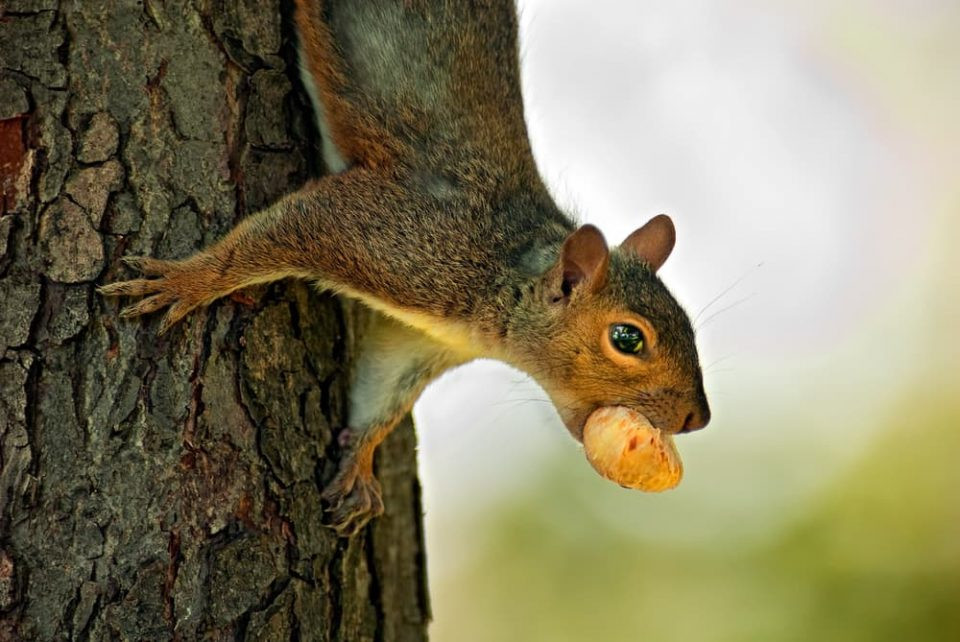 Squirrel carrying a seed
Squirrel carrying a seed
Alt Text: Squirrel carrying a seed, illustrating animal dispersal.
2. Why Is Seed Dispersal Important For Plant Survival?
Seed dispersal is crucial for plant survival because it reduces competition for resources, facilitates colonization of new habitats, and promotes genetic diversity. By moving seeds away from the parent plant, dispersal ensures that seedlings have access to sunlight, water, and nutrients without competing with established plants.
2.1 Reducing Competition
Dispersal minimizes competition between parent plants and their offspring for limited resources such as sunlight, water, and nutrients. When seeds are scattered, the resulting seedlings can establish themselves in areas where these resources are more readily available.
2.2 Colonizing New Habitats
Dispersal allows plants to colonize new areas and expand their geographic range. This is particularly important for adapting to changing environmental conditions and taking advantage of newly available habitats.
2.3 Promoting Genetic Diversity
By enabling plants to spread far and wide, seed dispersal promotes genetic diversity within plant populations. This diversity is essential for adapting to environmental challenges, such as disease outbreaks or climate change.
3. How Do Plants Adapt Their Seeds For Different Dispersal Methods?
Plants exhibit remarkable adaptations in seed structure and characteristics to facilitate various dispersal methods. These adaptations include lightweight structures for wind dispersal, waterproof coatings for water dispersal, and hooks or barbs for animal dispersal.
3.1 Adaptations For Wind Dispersal
Seeds adapted for wind dispersal are often lightweight and equipped with structures that increase their surface area, such as wings or plumes. Dandelion seeds have feathery pappus structures that act like parachutes, allowing them to float on the wind. Maple seeds have wing-like samaras that spin as they fall, increasing their time aloft.
3.2 Adaptations For Water Dispersal
Seeds adapted for water dispersal are typically buoyant and have waterproof outer layers. Coconut seeds have a thick, fibrous husk that allows them to float for extended periods. Mangrove seeds are also buoyant and can germinate while floating, allowing them to establish quickly in new coastal areas.
3.3 Adaptations For Animal Dispersal
Seeds adapted for animal dispersal often have hooks, barbs, or sticky substances that attach to animal fur or feathers. Burdock seeds have hooked spines that cling to passing animals. Other seeds are encased in fleshy fruits that animals eat, with the seeds passing through their digestive systems unharmed.
4. What Role Do Humans Play In Seed Dispersal?
Humans play a significant role in seed dispersal, both intentionally and unintentionally. Intentional dispersal includes planting crops and ornamental plants, while unintentional dispersal occurs through activities such as transporting seeds on clothing or vehicles.
4.1 Intentional Dispersal
Humans intentionally disperse seeds through agriculture, horticulture, and reforestation efforts. Planting crops and ornamental plants introduces new species to different regions, while reforestation projects aim to restore degraded ecosystems by planting native trees and shrubs.
4.2 Unintentional Dispersal
Unintentional seed dispersal occurs when seeds are accidentally transported by humans. Seeds can stick to clothing, shoes, or vehicles and be carried to new locations. Invasive species are often spread through unintentional dispersal, posing a threat to native ecosystems.
4.3 The Impact Of Tourism On Seed Dispersal
As you explore Vietnam with SIXT.VN, be mindful of your impact on seed dispersal. While enjoying the country’s natural beauty, ensure you’re not inadvertently transporting seeds on your clothing or gear. Supporting local conservation efforts can also help protect native plant species and their habitats.
5. How Does Seed Dispersal Affect Ecosystems?
Seed dispersal plays a crucial role in shaping ecosystems by influencing plant distribution, community structure, and ecosystem dynamics. Effective seed dispersal can lead to increased biodiversity, enhanced ecosystem resilience, and improved ecosystem functioning.
5.1 Influencing Plant Distribution
Seed dispersal determines where plants grow and how they are distributed across the landscape. This distribution pattern influences the structure and composition of plant communities, affecting the availability of resources for other organisms.
5.2 Shaping Community Structure
Seed dispersal influences the interactions between different plant species and between plants and animals. For example, animal-mediated seed dispersal can create mutualistic relationships between plants and frugivores, shaping the structure of ecological communities.
5.3 Affecting Ecosystem Dynamics
Seed dispersal affects ecosystem processes such as nutrient cycling, primary productivity, and carbon sequestration. By influencing plant distribution and community structure, seed dispersal can have cascading effects on the entire ecosystem.
6. Can Climate Change Impact Seed Dispersal Patterns?
Climate change can significantly impact seed dispersal patterns by altering wind and water currents, changing animal migration patterns, and affecting plant reproductive phenology. These changes can disrupt dispersal processes and lead to shifts in plant distributions.
6.1 Altering Wind And Water Currents
Climate change can alter wind and water currents, affecting the dispersal of seeds by wind and water. Changes in wind patterns can increase or decrease the distance that wind-dispersed seeds travel, while changes in water currents can affect the dispersal of water-dispersed seeds.
6.2 Changing Animal Migration Patterns
Climate change can alter animal migration patterns, affecting the dispersal of seeds by animals. Changes in temperature and precipitation can cause animals to migrate to different areas, disrupting the mutualistic relationships between plants and animals.
6.3 Affecting Plant Reproductive Phenology
Climate change can affect plant reproductive phenology, altering the timing of flowering and fruiting. These changes can disrupt seed dispersal processes, as seeds may be released at times when dispersal agents are not available.
7. What Are Some Unusual Methods Of Seed Dispersal?
Besides the primary methods, some plants have evolved unique and unusual seed dispersal strategies. These include ant dispersal (myrmecochory), explosive seed pods, and even dispersal by dung beetles.
7.1 Ant Dispersal (Myrmecochory)
Myrmecochory is a seed dispersal method where ants carry seeds to their nests. Plants that utilize this strategy produce seeds with elaiosomes, nutrient-rich attachments that attract ants. The ants carry the seeds to their nests, consume the elaiosomes, and discard the seeds in nutrient-rich areas, promoting germination.
7.2 Explosive Seed Pods
Some plants have explosive seed pods that forcefully eject seeds into the air. The squirting cucumber (Ecballium elaterium) is a notable example, with fruits that detach from the stem and squirt seeds and a stream of liquid when disturbed.
7.3 Dispersal By Dung Beetles
Dung beetles play a unique role in seed dispersal by burying seeds along with dung. Some plants produce seeds that mimic the scent and appearance of dung, attracting dung beetles that bury the seeds in nutrient-rich dung pats.
8. How Can Understanding Seed Dispersal Enhance Our Appreciation Of Nature?
Understanding seed dispersal can deepen our appreciation of the intricate relationships between plants, animals, and the environment. By learning about the ingenious strategies plants use to disperse their seeds, we can gain a greater understanding of the complexity and beauty of natural ecosystems.
8.1 Recognizing Interconnectedness
Seed dispersal highlights the interconnectedness of living organisms and their environment. The mutualistic relationships between plants and animals, the influence of wind and water currents, and the impact of human activities all demonstrate the complex web of interactions that shape ecosystems.
8.2 Appreciating Biodiversity
Seed dispersal contributes to the maintenance of biodiversity by allowing plants to colonize new habitats and adapt to changing conditions. By understanding the role of seed dispersal in promoting biodiversity, we can better appreciate the importance of conservation efforts.
8.3 Fostering Environmental Stewardship
Understanding seed dispersal can foster a sense of environmental stewardship by increasing our awareness of the impact of human activities on plant communities. By taking steps to minimize our impact on seed dispersal processes, we can help protect the health and resilience of natural ecosystems.
9. How Can SIXT.VN Enhance Your Travel Experience In Vietnam?
Just as seeds require specific conditions to thrive, travelers need reliable services to make the most of their journey. SIXT.VN offers a range of services designed to ensure your trip to Vietnam is seamless and enjoyable.
9.1 Tailored Travel Itineraries
SIXT.VN provides personalized travel itineraries that cater to your interests and preferences. Whether you’re interested in exploring the bustling streets of Hanoi, discovering the serene beauty of Ha Long Bay, or immersing yourself in the vibrant culture of Hoi An, we can create a customized itinerary that suits your needs.
9.2 Airport Transfer Services
Arrive in Vietnam with ease by booking our reliable airport transfer services. Our professional drivers will greet you at the airport and transport you to your hotel in comfort, allowing you to relax and unwind after your journey.
9.3 Hotel Booking Assistance
SIXT.VN offers a wide selection of hotels to suit every budget and preference. Whether you’re looking for a luxurious resort, a boutique hotel, or a budget-friendly guesthouse, we can help you find the perfect accommodation for your stay in Vietnam.
9.4 Guided Tours
Explore Vietnam with our expert-guided tours. Our knowledgeable guides will take you to the must-see attractions and hidden gems, providing insights into the history, culture, and natural beauty of the country.
10. What Are Some Common Misconceptions About Seed Dispersal?
Several misconceptions exist regarding seed dispersal, including the belief that all seeds are dispersed by wind, that dispersal distances are always long, and that human-mediated dispersal is always negative.
10.1 Not All Seeds Are Dispersed By Wind
While wind dispersal is a common method, many plants rely on other dispersal mechanisms such as water, animals, gravity, and explosive seed pods. The dispersal method depends on the plant species and its environment.
10.2 Dispersal Distances Are Not Always Long
Some seeds are dispersed over long distances, but many others are dispersed only a short distance from the parent plant. Gravity dispersal, for example, typically results in seeds falling directly to the ground near the parent plant.
10.3 Human-Mediated Dispersal Is Not Always Negative
While unintentional human-mediated dispersal can lead to the spread of invasive species, intentional human-mediated dispersal can have positive effects, such as introducing crops and ornamental plants to new regions and restoring degraded ecosystems through reforestation efforts.
By understanding the diversity of seed dispersal methods and the factors that influence dispersal processes, we can gain a deeper appreciation of the complexity and beauty of the natural world. Just as SIXT.VN strives to provide you with the best travel experience in Vietnam, plants have evolved ingenious strategies to ensure the survival and spread of their seeds.
Ready to explore the natural wonders of Vietnam? Let SIXT.VN handle the details, ensuring your journey is as seamless and fascinating as the journey of a seed! Contact us today to start planning your adventure with our expert travel advisory, secure your reliable airport transfer, discover a wide array of hotels, or explore the beauty of Vietnam on our guided tours. With SIXT.VN, your dream trip is just a click away.
Address: 260 Cau Giay, Hanoi, Vietnam
Hotline/Whatsapp: +84 986 244 358
Website: SIXT.VN
FAQ About Seed Dispersal
1. What is seed dispersal?
Seed dispersal is the movement of seeds away from the parent plant to new locations, essential for plant survival and expansion.
2. What are the main methods of seed dispersal?
The main methods include wind, water, gravity, animals, and ballistic (explosive) dispersal.
3. Why is seed dispersal important?
It reduces competition for resources, allows colonization of new habitats, and promotes genetic diversity.
4. How do plants adapt for wind dispersal?
They have lightweight seeds with structures like wings or plumes to help them float.
5. How do plants adapt for water dispersal?
They have buoyant seeds with waterproof outer layers.
6. What role do animals play in seed dispersal?
Animals can carry seeds on their fur, eat fruits and disperse seeds through their droppings, or bury seeds for later use.
7. Can humans affect seed dispersal?
Yes, both intentionally through planting and unintentionally by transporting seeds on clothing or vehicles.
8. How does climate change impact seed dispersal?
It can alter wind and water currents, change animal migration patterns, and affect plant reproductive timing.
9. What is myrmecochory?
It is a type of seed dispersal where ants carry seeds to their nests.
10. What are some unusual methods of seed dispersal?
Examples include explosive seed pods and dispersal by dung beetles.



